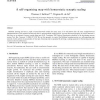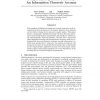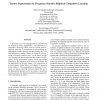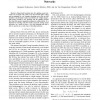NN
1998
Springer
13 years 4 months ago
1998
Springer
A learning model for coupled oscillators is proposed. The proposed learning rule takes a simple form by which the intrinsic frequencies of the component oscillators and the coupli...
IJON
2002
13 years 4 months ago
2002
We consider the origin of the high-dimensional input space as a variable which can be optimized before or during neuronal learning. This set of variables acts as a translation on ...
IJON
2006
13 years 4 months ago
2006
Hebbian learning has been a staple of neural-network models for many years. It is well known that the most straight-forward implementations of this popular learning rule lead to u...
NIPS
2000
13 years 5 months ago
2000
The paradigm of Hebbian learning has recently received a novel interpretation with the discovery of synaptic plasticity that depends on the relative timing of pre and post synapti...
NIPS
2004
13 years 5 months ago
2004
Areas of the brain involved in various forms of memory exhibit patterns of neural activity quite unlike those in canonical computational models. We show how to use well-founded Ba...
NIPS
2007
13 years 5 months ago
2007
Independent component analysis (ICA) is a powerful method to decouple signals. Most of the algorithms performing ICA do not consider the temporal correlations of the signal, but o...
NIPS
2007
13 years 5 months ago
2007
Reward-modulated spike-timing-dependent plasticity (STDP) has recently emerged as a candidate for a learning rule that could explain how local learning rules at single synapses su...
ICIAP
1999
ACM
13 years 8 months ago
1999
ACM
In this paper a new learning algorithm is proposed with the purpose of texture segmentation. The algorithm is a competitive clustering scheme with two specific features: elliptic...
IJCNN
2006
IEEE
13 years 10 months ago
2006
IEEE
Abstract— Supervised learning rules for spiking neural networks are currently only able to use time-to-first-spike coding and are plagued by very irregular learning curves due t...




